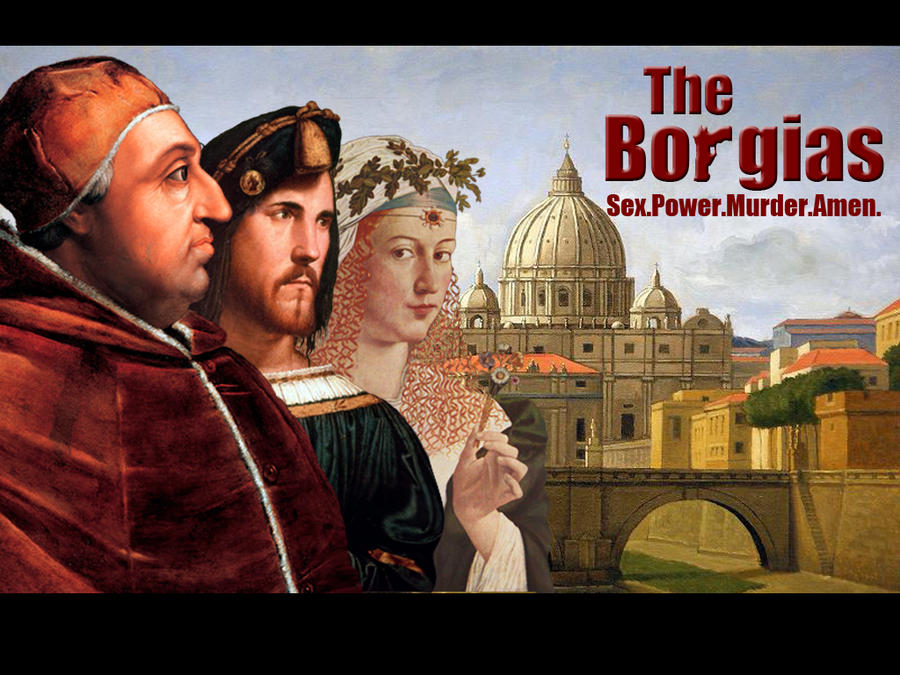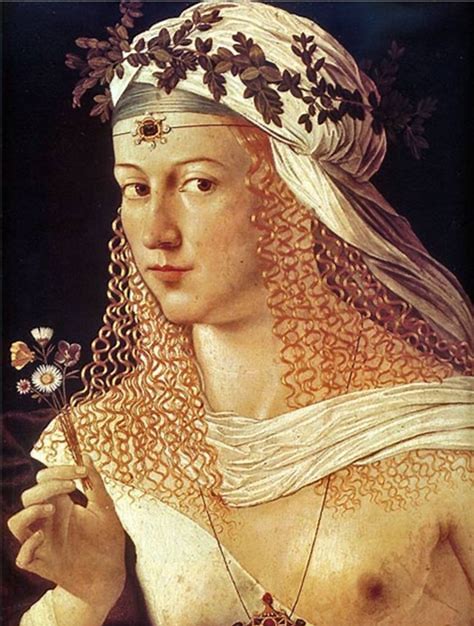I will write here about the historical place of Lucrezia Borgia without going into the prejudice and gossip that surrounded her in her lifetime and beyond. Lucrezia was the daughter of Rodrigo Borgia, from a family that left a significant mark on the period between the late 15th and early 16th centuries.
Rodrigo Borgia, as Pope Alexander VI, had two major allies in his conquests: his son Cesare Borgia, his personal “warrior” who aggressively acquired territories to be annexed to the Papal States, and his daughter Lucrezia, whom he used as a bargaining chip for alliances with other wealthy Italian families.
She was born on April 18, 1480, in Subiaco, near Rome. Her mother, Vannozza dei Cattanei, was one of the mistresses of then-Cardinal Rodrigo de Borgia.
Unlike most educated women of her time, who typically gained knowledge through convents, Lucrezia received her education from intellectuals at court and from close relatives. Her education included a strong foundation in the Humanities, which were being revived by the Catholic Church at the time. She was proficient in Spanish, Catalan, Italian, and French, making her well-prepared for an advantageous marriage to any European monarch or prince. She was also literate in both Latin and Greek.
Lucrezia Borgia’s life is closely tied to her father and to her brother Cesare Borgia, who had a meteoric rise to power and a disastrous fall. Cesare was Pope Alexander VI’s favorite son and was known for his thirst for power. He is cited as an example of a tyrant by Machiavelli in “The Prince.”

Lucrezia served as a tool for forming alliances through marriage. She was a valuable commodity to be exchanged for connections, favors, and alliances with powerful Italian families.
Her first marriage, arranged by her father, was to Don Cherubino Joan de Centelles in the Kingdom of Valencia. She had not yet reached her teenage years. The marriage was annulled after just two months in favor of a new marriage contract with Don Gaspare Aversa.
When Rodrigo became Pope Alexander VI, his focus shifted toward alliances with powerful Italian families. Consequently, he annulled Lucrezia’s previous engagements and arranged for her to marry Giovanni Sforza, a member of the House of Sforza who was Lord of Pesaro and held the title of Count of Catignola. Lucrezia and Giovanni were married on June 12, 1493, in Rome. She was 13 years old.
Eventually, the Borgia family no longer needed the Sforzas and Giovanni Sforza’s presence at the papal court became unnecessary. Seeking new, more advantageous political alliances, the Pope tried to annul the marriage, but Sforza refused to cooperate. In retaliation, Pope Alexnder declared him a heretic and an enemy of the Church, and ordered his lands to be seized. He may also have covertly ordered Giovanni’s execution. The widely accepted version of the story is that Lucrezia was informed of this by her brother Cesare and warned her husband, who fled Rome.
After her annulment from Sforza, Lucrezia was married to the Neapolitan Alfonso of Aragon, but their marriage was short-lived.
These various unhappy marital contracts, her love affairs, and her alleged incestuous relationship with her brother, prompted widespread gossip and rumors.
Following the death of Alfonso of Aragon, Lucrezia’s father arranged a third marriage, this time to Alfonso I d’Este, Duke of Ferrara, in early 1502. She was 22 years old. During this marriage she had eight children and came to be considered a respectable and accomplished Renaissance duchess. She effectively overcame her earlier reputation and even survived the downfall of the Borgia family following her father’s death.
Lucrezia died in 1519, at the age of 39, ten days after giving birth to a stillborn daughter. Her death marked the end of the Borgia family’s dominance in Italy.
